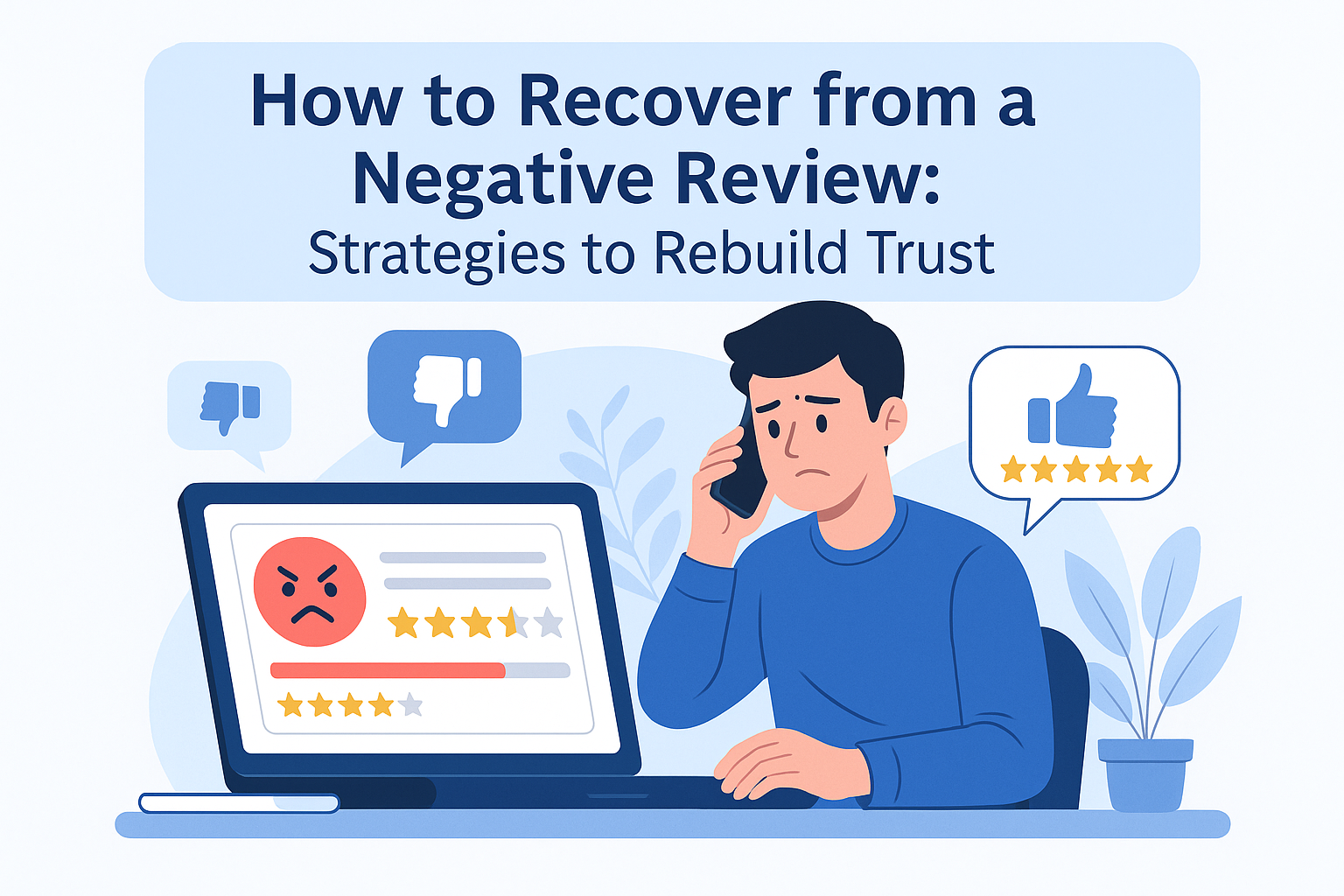
How to Recover from a Negative Review: Strategies to Rebuild Trust
Published: July 2025
A negative review can feel like a personal attack, especially if you’ve poured your time, energy and expertise into your work. Whether you run a local business, manage an e-commerce shop or offer professional services, a single poor review can cast doubt in the minds of prospective customers. However, all is not lost. In many cases, a well-handled response can turn criticism into an opportunity to demonstrate your professionalism and commitment to customer satisfaction.
In this guide, we’ll explore practical strategies to recover from negative reviews, gather positive feedback, and use content to overshadow negativity.
Understand the Impact of Negative Reviews
Before you respond, it’s important to grasp why negative reviews are so powerful. Studies consistently show that consumers trust online reviews as much as personal recommendations. Even a handful of one-star ratings can reduce trust, lower conversion rates and impact your search rankings. However, consumers also pay close attention to how you respond. A prompt, professional reply can reassure potential customers that you take concerns seriously.
Stay Calm and Objective
When you first read a critical review, take a deep breath and step away if needed. Responding defensively or emotionally often escalates the situation. Instead, approach the feedback as constructively as possible. Ask yourself:
- Is there any truth to the complaint?
- Could this be an opportunity to improve processes or training?
- What would a professional, impartial reply look like?
A calm, measured response sets the tone for resolution.
Respond Promptly and Politely
Aim to reply within 24–48 hours. A timely response shows you care about your customers’ experiences. Your reply should include:
- A polite acknowledgement of their experience
- A sincere apology if appropriate
- An invitation to continue the conversation privately
Here’s an example:
“Thank you for sharing your feedback. I’m sorry to hear your experience didn’t meet your expectations. I’d love to learn more about what happened so we can make things right. Please contact me at [your email or phone number].”
Avoid lengthy justifications or blaming the customer. Keep your tone friendly and solution-focused.
Take the Discussion Offline
Whenever possible, move detailed conversations away from public view. Providing a direct contact method allows you to resolve issues privately. Many upset customers simply want to feel heard. When they see you’re genuinely willing to help, they often soften their stance and, in some cases, may even update their review to reflect the positive resolution.
Rectify the Problem Where Possible
If the complaint is valid, take clear action to fix the issue. This could include:
- Offering a replacement or refund
- Providing additional training to your team
- Updating your processes to prevent repeat problems
When customers see that you’re willing to make amends, it reinforces trust and demonstrates that you take feedback seriously.
Encourage Satisfied Customers to Leave Reviews
One of the most effective ways to dilute the impact of a negative review is to generate fresh, positive feedback. Develop a system for regularly asking happy customers to share their experiences. You might:
- Send follow-up emails after a purchase with a direct review link
- Offer a small incentive, such as a discount on a future order
- Display a QR code at your point of sale leading to your review page
Be sure to follow platform guidelines—some review sites prohibit offering incentives.
Use Content to Showcase Your Strengths
Negative reviews can often be overshadowed by demonstrating your expertise and commitment to quality. Create and share content that reinforces your credibility. For example:
- Publish blog posts explaining how you uphold high standards
- Share customer success stories and testimonials
- Create behind-the-scenes videos showing your process
Monitor Your Online Reputation Proactively
Rather than waiting for an issue to surface, set up tools to track mentions of your business:
- Google Alerts for your business name
- Social media monitoring platforms like Mention or Brand24
- Industry-specific review platforms
Proactive monitoring helps you respond quickly and prevent small issues from escalating.
Learn and Adapt
Every negative review is an opportunity to learn. Even if the criticism feels unfair, reflect on whether any part of your process could be improved. Incorporate feedback into training, policies and service delivery. Over time, this commitment to learning reduces repeat issues and strengthens your reputation.
Key Takeaways
Recovering from a negative review isn’t just about damage control. It’s a chance to show prospective customers that you care deeply about delivering a great experience. By responding promptly, rectifying issues and consistently promoting positive stories, you can rebuild trust and even strengthen your reputation.
Remember: no business is immune to criticism. What sets you apart is how you handle it.
📣 Want help monitoring your reviews and protecting your reputation?
Contact us today for a free consultation on proactive reputation management.